Gregory S. Lamb's Blog, page 3
December 20, 2015
Best Books of 2015: Top 5 plus honorable mention
As we approach the close of 2015 and with the holiday season well underway, I thought now would be a good time to shout out about the top five books I read this year. Since I didn’t plug a “top 5” for 2014, I’m going to stretch and add a few to a separate list.
My followers probably already know that my passion for reading and writing comes from fictional stories of tragedy and triumph and I love “the quiet novel.” This year I couldn’t help but includes some non-fiction that molds so well into this theme:
The list of honorable mention works follow (alphabetically):
Bound for Distant Seas – by James Balwin. Read my review and author interview here on this blog.
Levant Mirage – by Oliver Chase. See my review.
Relic II – by Jonathan Brookes. See my review.
The Opposite of Hollywood – by Margo Perin. See my review.
The best of 2014 – Though I read a lot of fiction in 2014, non-fiction and poetry stood out the most. These are the titles:
The Boys in the Boat – by Daniel James Brown. This was a work of what I’d consider the best in the non-fiction genre. See my review.
I thought these to collections of poetry were among the most enjoyable I’ve read: The Hundred Year House – by Michael McDowell. I reviewed this collection and posted an author interview. Another collection equally enjoyable was, We Walk Alone – by Mariah E. Wilson. The author graciously granted this interview.
The Top 5 2015 Count-Down:
#5 The Former Hero – by Jeffrey Allen Mays
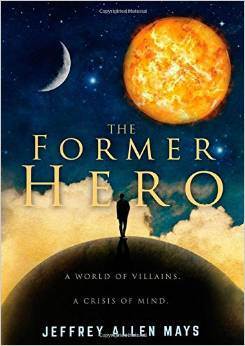 I hadn’t read anything as good in the genre of experimental literature since the early ’70s when Ishmael Reed wow’ed me with The Last Days of Louisiana Red. My appetite for edgy writing is once again fulfilled.
I hadn’t read anything as good in the genre of experimental literature since the early ’70s when Ishmael Reed wow’ed me with The Last Days of Louisiana Red. My appetite for edgy writing is once again fulfilled.
#4 The Hunters – by James Salter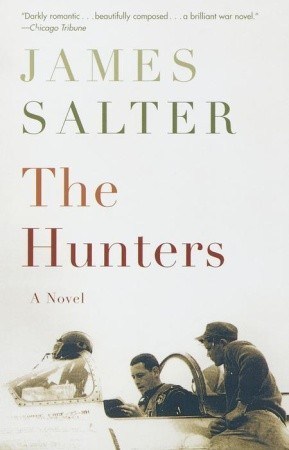
This excellent story about “when jets were young” is a must read for anyone who’s ever flown a combat jet. See my review.
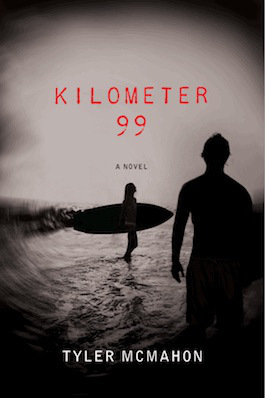 #3 Kilometer 99 – by Tyler McMahon
#3 Kilometer 99 – by Tyler McMahon
There are so many reasons I enjoyed this story. The best advice I can offer perspective readers is to take the leap, read it and see for yourself. Tyler granted me an author interview and provides some personal insights on “point of view.”
#2 The Light Between Oceans – by M.L. Stedman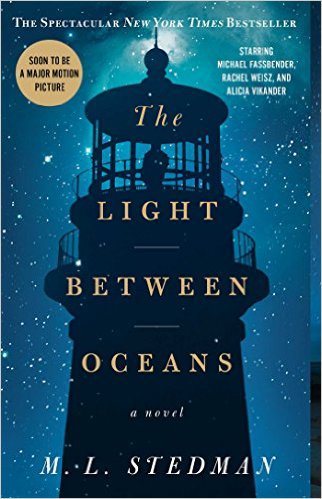
By far this is the best debut novel I’ve read in decades. I found it emotionally gripping with a strong theme. The author also has a rare talent for presenting vivid place descriptions. My review may encourage further investigation.
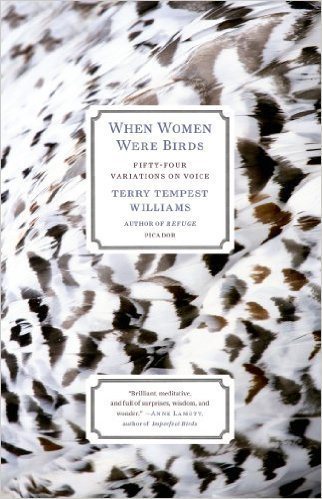
#1 My top read for 2015 might just be among the very best for this decade!
When Women Were Birds by Terry Tempest Williams. I discovered this short piece of non-fiction during a public radio interview with the author. It is a work unique among those in the memoir genre. I was deeply moved by the words. See my recent review to get a bigger feel for what you’ll miss if you don’t read this lovely work.


Book Review: The Boys in the Boat – by Daniel James Brown
Daniel James Brown knew what he was doing before he set out to write this highly entertaining and interesting piece of non-fiction. In fact, for me it will likely go down as the best I’ve read in this decade. In past decades, among the best that gripped my attention and tugged my emotions, I’d say that “The Perfect Storm” was the story of the ’90s, and for me, “Zeitoun” ranks near the top for those written at the turn of the century. “Boys in the Boat” rivals anything I’ve read this decade and suspect it will be a top contender for the best in the ten years of non-fiction I’ll be reading between now and 2020. 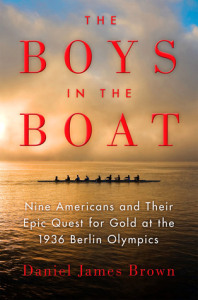
As a fiction writer, I rarely read non-fiction, but when I do, I’m reminded of where a truly good story comes from. With “Boys in the Boat”, I found myself riding along with the crew of “Husky Clipper” as they stroked or, in the terms the author more accurately describes as a crew of 9 swinging to “Gold” in the 1936 Olympics in Berlin. As a voracious reader, I’ll offer a few things prospective readers should consider in their decision to invest their precious reading time in this fabulous work:
– The historical period was instrumental in the makings of a good story with plenty of drama (depression era, the rise of the Nazis, persecution of Jewish people, and the emerging age of media)
– The characters, all real people with a history of their own. From the coaches, the boat builder, and the entire crew, not just the 9 that represented USA in “Eights” at the ’36 Olympiad, but their families, the coach and crew of their rivals at Cal, and the political opponents in Germany during that era.
Brown delivers a well researched and meticulously crafted narrative that takes the reader on a blow-by-blow ride into the world of the common oarsman who achieved the uncommon during a period in history that shaped the world we live in. As I read, I found myself riding the roller coaster ride between laughing, riveted at the edge of my arm chair, and wiping the tears from my eyes as a result of the emotion the author managed to evoke by presenting readers with authentic stories that would resonate with anyone with a heart.


December 15, 2015
Book Review: “The Light Between Oceans” by M. L. Stedman
Extraordinary debut novel!
Stedman’s debut novel is a compact study in highly charged emotions evoked from strong images of a bygone era. The author’s place descriptions and talent for developing unique 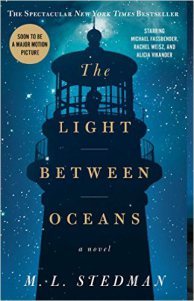 voice and perspective drawn from each character’s point of view made me a captive reader from the first pages. Stedman hits on a theme that resonates across ages and oceans. When a person has the best of intentions and is able to rationalize why a bad idea can be good, the consequences will often catch up. Stedman’s main characters, Tom and Isabel present us with just such a story.
voice and perspective drawn from each character’s point of view made me a captive reader from the first pages. Stedman hits on a theme that resonates across ages and oceans. When a person has the best of intentions and is able to rationalize why a bad idea can be good, the consequences will often catch up. Stedman’s main characters, Tom and Isabel present us with just such a story.
Tom, a veteran of the trenches during the Great War returns to shore from his isolated vocation as a lighthouse keeper. He meets Isabel and is awakened again to the the possibility of experiencing a happy life. What plays out on Janus Rock, the location off the coast of a West Australian port, turns out to be a tragic end to happiness in the lives of more people than Tom or Isabel could have imagined, including their own.
I found Stedman’s writing craft to be “top drawer.” This author’s ability to evoke emotion and thought from a reader is a rare talent. I’ll be including this one as one of my top 5 read this year and likely among the top 5 for the decade – we’ll see. There are still a few years remaining in this one and Stedman might just pull another hat trick and wow me with another extraordinary novel.


November 8, 2015
Book Review: Levant Mirage by Indie author Oliver Chase
An imaginative and fun read!
I took the thrill ride and was captivated by the action that unfolded in the first pages of Levant Mirage. Chase’s latest is an all encompassing military techno thriller that has no bounds. The characters are engaging and true to life. The extraordinary plot line moves at 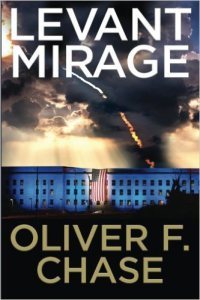 a pace that will keep you hanging on by your fingernails.
a pace that will keep you hanging on by your fingernails.
Army Major Adam Michaels is a combat veteran. With a tainted record, he’s been relegated to an unfulfilling position as a staff officer in the Pentagon. That is until a cyber attack on a top secret program opens old wounds. Michaels is in the unique position to leverage the relationships built on a PhD dissertation he’d nearly forgotten about. He’s also a man with the distinction of having been bred in a family of wealth and means, but not without a sour relationship with his father and a cold war with an ex-wife. The one bright light in Adam’s life is his commitment to do his best by his daughter. These are the resources he draws on to thwart an adversary intent on establishing a global caliphate intent on driving civilization back several centuries.
Not to blow all the fun, but anyone vaguely interested in space operations and orbital mechanics will be really impressed with how the author incorporates an asteroid in a nearby orbit, as a main player in the story’s climax. For me, the best part of a thriller is the build up of suspense and Levant Mirage does just that. The suspense builds all the way to the last pages. Oliver Chase has hit his stride. Now that I’ve discovered my new “go-to” author for fast paced adventure and suspense, I can’t wait to read Chase’s next release.
A pre-release copy of this title was provided to me by the publisher in exchange for an honest review.


Book Review: Relic II: Resurrection by Jonathan Brookes
Hooked on Thals
Brookes hooked me with the prequel, Relic and now having been captivated by Relic II : Resurrection, I can’t wait to find out what happens next. Isn’t that what every fiction 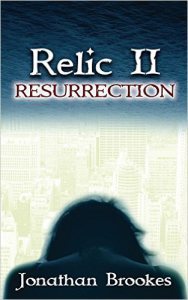 author of a good series wants to hear from their readers? I hope Mr. Brookes gets the message because his creative talents and imagination came through once again in this latest novella that picks up where Relic left off.
author of a good series wants to hear from their readers? I hope Mr. Brookes gets the message because his creative talents and imagination came through once again in this latest novella that picks up where Relic left off.
A secret military project to clone super warriors from the DNA of Neanderthals got out of hand and was presumably terminated without a trace of it ever having existed, with one exception…. In the opening passage, prominent characters from Relic re-emerge, General Holbrooke is at odds with Colonel Birchwood, the one survivor of all attempts to terminate the super secret research and development program once and for all. In the middle was the not so innocent surrogate mother of the unborn offspring that would raise questions, eyebrows, and eventually draw attention to a failed attempt at covering up the program.
Brookes does a fantastic job of developing the perfect set of characters to act out the drama of what would become of a Neanderthal new born known to be different by a select few. Captain Robert Gordon is assigned to contain the project and keep Birchwood from gaining access to the newborn. What happens as the story progresses is a series of unexpected subplots that hug tight to the overall story and beg for a third installment. Mr. Brookes, your readers are eagerly waiting. Give us another!


October 14, 2015
Book Review: “The Opposite of Hollywood” an autobiographical novel, by Margo Perin
An Honest Reflection
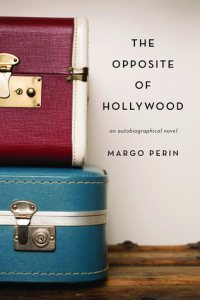 Some of the most interesting people are the product of upbringing and circumstance. The lives of people we’ve never met can be full of gripping stories, complete with the daily drama that unfolds in background. Ms. Perin’s latest autobiographical novel is an honest and courageous presentation of a search for truth within one’s own life. For me, the genre itself is interesting because it differs from a memoir in that the author chose not to claim the story as a 100% accurate presentation of events. That in itself lends more credibility to the story as I find most memoirs to be the author’s ideal perception of self. In Perin’s novel, names may have been changed, some details of locales and maybe even of events may have been slightly altered, but I’d venture to guess that most of what the author’s main character, Tosca experienced throughout the story was largely based on fact and truth.
Some of the most interesting people are the product of upbringing and circumstance. The lives of people we’ve never met can be full of gripping stories, complete with the daily drama that unfolds in background. Ms. Perin’s latest autobiographical novel is an honest and courageous presentation of a search for truth within one’s own life. For me, the genre itself is interesting because it differs from a memoir in that the author chose not to claim the story as a 100% accurate presentation of events. That in itself lends more credibility to the story as I find most memoirs to be the author’s ideal perception of self. In Perin’s novel, names may have been changed, some details of locales and maybe even of events may have been slightly altered, but I’d venture to guess that most of what the author’s main character, Tosca experienced throughout the story was largely based on fact and truth.
Tosca Ring, is the 4th offspring in a family of 9. Tosca’s mother was a movie and opera fanatic and named their children after movie stars and opera singers. The story opens with the Ring family living in NY City and for unknown reasons started taking holiday trips that turned into extended moves. Tosca and her siblings were in a constant state of adjusting to new schools, new rules, new friends and neighbors, all the while never able to disclose anything about her family situation. Her parents were secretive, irresponsible, and ultimately abusive toward their children. On the outside, the Ring family may very well have been perceived as mysterious, intriguing jet setters. However, the dreary and disturbed lives that each of children endured were amplified by the lack of attention and extreme treatment received from their parents. The story spans the most influential years of Tosca’s life, from a young age until late teens.
As an avid and curious reader I’m of the belief that authors are motivated to create and publish for a multitude of reasons. Perin may have written this novel in order to confront the naked truths of her own life. Beyond pure entertainment, my interpretation of the result was that Ms. Perin found peace by confronting the reality of her life in the process of sharing it with others. A review of the author’s accomplishments as an artist, writer, and musician are a testimony to the possibility of overcoming family disfunction.
Young adult readers/parents should be warned that some of the passages in this novel contain vulgar language, promiscuous situations, and violence. All of it felt genuine, honest and written with purpose. I came away with a realization that family disfunction and abuse can be a thin layer away from what most of us might see. I also came away reflecting on the resiliency of resourceful and hopeful individuals. Margo Perin – I suspect many readers will identify with Tosca and the lives of her sibs and maybe find peace in the knowledge that they are not alone.


September 4, 2015
Book Review: “When Women Were Birds: Fifty-four Variations on Voice” by Terry Tempest Williams
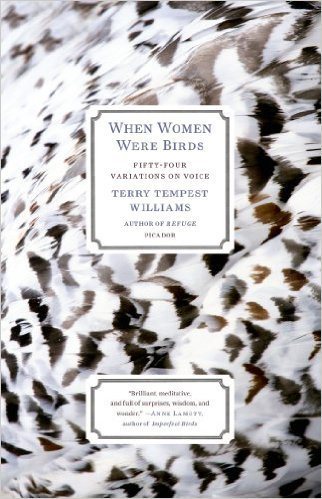 When a woman author is wedded to words, the result is a thing of beauty. When Women Were Birds is the best book of any genre that I’ve read in the past five years. I was captivated from the very first page. The reading experience was like taking a tour through nature and lurking within the depths of an artists imagination all at the same time.
When a woman author is wedded to words, the result is a thing of beauty. When Women Were Birds is the best book of any genre that I’ve read in the past five years. I was captivated from the very first page. The reading experience was like taking a tour through nature and lurking within the depths of an artists imagination all at the same time.
I’m not a big reader of the memoir or auto biography genre, but I was inspired to read Terry Tempest Williams after hearing an interview she did with travel journalist, Rick Steves. The interview started out with Ms. Williams thanking Rick for the advice to young adventurers, that they should keep a journal while traveling. This opened the door for a well thought out discussion of this book.
In the opening chapter, Williams, having grown up in a Mormon family, reveals that Mormon women are raised with two responsibilities; to bare children and to keep a journal. Ms. Williams’s discovered that the journals her mother had left for her on her passing were mysteriously empty. She believed the mystery to have been a message from her mother to seek her voice. Each of the fifty-four chapters of this work touches on the main theme of finding ones voice. Williams structured this memoir in a series of vignettes that explore this theme. Woven into this them is the relationship the author has to the environment and as she bares her soul while sharing her thoughts on finding voice. She grew up with a field guide to birds and throughout this work relates the birdsong and the quiet in between, to her personal experiences of learning to listen while discovering what it is to become empowered.
Though Ms. Williams did not read from When Women Were Birds, during her interview with Mr. Steves, I could hear her voice throughout each of the chapters as I read them. Beginning with the first chapter after sharing her discover of the empty journals, she offers, “Empty pages become possibilities.” In another of the early chapters she shares her thoughts on marriage and the different roles of men and women. She states “If a man knew what a woman never forgets, he would love her differently.” These sentences are brief but thoughtful and evoke unexpected emotions.
This book is not a work to rush through, it is a short work you’ll want to think about as you read each passage. I’m eager to read the other works by Terry Tempest Williams and am also pleased to find that there is an audio version of When Women Were Birds, narrated by Ms. Williams. I’m anticipating that hearing Ms. Williams sharing her journey of finding voice will be even more beautiful than reading about it.


August 18, 2015
Book Review/Reflections: “Life on Foot: A Walk Across America” by Nate Damm
A friend of mine has convinced me to join him on a walking/hiking adventure along the west coast of the United States from the Canadian border to the Mexican frontier. Part of our preparations along with daily hikes and walks is to read as many books and journals written by others who have taken on epic journeys. Our initial inspiration stemmed from John Francis, author of The Planet Walker. When I discovered that Francis’s book was the inspiration for Nate Damm’s book, Life on Foot, I knew I’d want to read it too. My review of Life on Foot follows:
I had mixed feelings about how best to review this non-fictional account of a young man’s adventure while walking across the United States. I thoroughly enjoyed reading and learning from the author’s experiences, while at the same time wasn’t impressed with his writing style.
I’ve r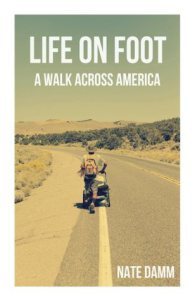 ead other first person accounts of cross country walkers, of which I found John Francis’s The Planet Walker to be the most inspirational. To Nate Damm’s credit, he acknowledged John Francis as his initial source of inspiration before setting out on his journey across North America, which took him over 7 months to accomplish.
ead other first person accounts of cross country walkers, of which I found John Francis’s The Planet Walker to be the most inspirational. To Nate Damm’s credit, he acknowledged John Francis as his initial source of inspiration before setting out on his journey across North America, which took him over 7 months to accomplish.
Mr. Damm did an excellent job of providing readers with a chronological blow by blow of the places and people he encountered during his travels. He shared his personal challenges along with the stories of others he met along the way. I recommend this book to anyone interested or curious about what it is like to walk great distances over an extended period. Readers seeking deep philosophy or refined writing might be disappointed with this book, but I found there were enough interesting and surprising aspects to it to enjoy reading every page.


August 6, 2015
Book Review and thoughts on having read, “Go Set a Watchman” by Harper Lee
Curiosity got the better of me when I heard Harper Lee, author of To Kill a Mockingbird published a second novel after more than 50 years. Since To Kill a Mockingbird is a favorite among favorites, I knew I had to read this one too.
If you’re a fan of powerful American fiction, you’ll be disappointed with this novel as I was until it hit me that every author has to cut their teeth on something. I found it interesting that this novel was written in the ’50s and has only recently been released – perhaps for good reason. My review of Go Set a Watchman follows:
I loved reading To Kill a Mockingbird and when I heard Harper Lee had another novel coming out, I knew I’d want to read it also. I didn’t expect it could possibly be as good as To Kill a Mocking Bird (TKAM) and after reading it, I discovered I was right. I also discovered something else; in the pre-release media for Go Set a Watchman I learned that the novel was written before Lee’s Pulitzer Prize winner TKAM published. Though it was written in the mid-1950s, it was never published until now and probably for good reason.
Go Set a Watchman is set in the early ’50s and opens with 26 year old Jean Louise Finch nick named “Scout” returning to Maycomb, Alabama where she grew up. Maycomb is the small southern town where her aging father, Atticus still practices law. It is a town in transition during a period when civil rights were at the forefront of social justice.
For me, a good novel stems from a great story with precise, economical prose. TKAM is that kind of novel, Go Set a Watchman isn’t. Written as a sequel to TKAM, Lee probably knew it wasn’t ready for publication. It perhaps served as inspiration to write TKAM, since it included many of the same characters as well as a theme and setting with potential to captivate an audience of readers. However, Go Set a Watchman lacked a hard hitting story and just droned on as a platform for Lee to express her views on social justice through the character of Jean Louise Finch. The title, Go Set a Watchman came from a passage where Jean Louise struggles to understand the changing attitudes of Maycomb and the town’s people. In this passage, Jean Louise expresses a need for an internal watchman to steer her conscience.
Reading both Go Set a Watchman and TKAM as an exercise in comparative literary analysis would be a good exercise for both students and teachers of high school level literature. As an avid reader and fiction author, I was surprised to have struggled with the point of view in the narration. On several occasions in the course of two-three paragraphs, the point of view shifted from first person to third person. I found it difficult at times. In some instances the commentary in the narrative had the feel of a diatribe.
Additionally, I was surprised at the repetition of back story in the earlier chapters. I felt like the author was circling back to a different kind of story, perhaps the one that served as Lee’s inspiration for TKAM.
If this were the only novel ever published by Harper Lee, she would have never become a household name among American authors. Read Go Set a Watchman if you are curious or enjoy an opportunity to see that a Pulitzer Prize winning author is also capable of producing a dud.


July 8, 2015
Book Review: “The Hunters” by James Salter
When Jets Were Young
It has been over sixty years since American pilots deployed to Korea to engage in aerial 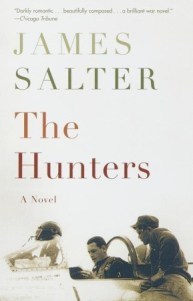 combat at the dawn of the jet age. BBC aired a taped interview of author James Salter in memorial of his passing last month. During the interview, there was mention of the editorial review from “Washington Post Book World” about Mr. Salter’s prose, “The contemporary writer most admired and envied by other writers. . . . He can . . . break your heart with a sentence.” Having heard that and knowing that the author was himself a veteran pilot with a MIG kill to his credit, I had to read this book.
combat at the dawn of the jet age. BBC aired a taped interview of author James Salter in memorial of his passing last month. During the interview, there was mention of the editorial review from “Washington Post Book World” about Mr. Salter’s prose, “The contemporary writer most admired and envied by other writers. . . . He can . . . break your heart with a sentence.” Having heard that and knowing that the author was himself a veteran pilot with a MIG kill to his credit, I had to read this book.
I discovered later there was a hollywood film of the same title loosely based on the story, so I watched it too. The movie was disappointing and I only mention it here in hopes that anyone who saw it might be more entertained by reading the novel.
To quote from another aviation novel, The Wild Blue, “The more things change, the more they stay the same.” This is true of Salter’s prose offering up the touch, feel, and smell of being based in Korea. Salter brings the reader into the cockpit of a first generation jet fighter with extraordinary authenticity. He managed to recreate the tension and frustration that comes from the boredom every pilot experiences while waiting for the next combat mission – dangerous as they tend to be. The mood is nicely captured in the following 3rd person narration: “The worst part, he knew, was what lay ahead, the empty hours of melancholy that would not be filled until he flew again.” Then finally, “…it becomes, I don’t know, a refuge. The sky is the godlike place. If you fly it alone, it can be everything.”
From the mind and imagination of a deep thinker engaged in the solitary art of aerial combat, Salter’s reputation for putting strings of beauty together with words is indeed something to behold. As he narrates main character Cleve Connell’s view enroute to “Mig Alley” north along the Yalu River, he takes the reader along for the ride:
“Shreds of cirrus hung in the air, like icicles along the edge of a roof.” He goes on to describe the rush of the landscape, “Now he seemed to be crossing it with great speed, as if running with the current of time.”
Some passages that might tantalize perspective readers with the feel for the changing seasons on the Korean peninsula read as follows:
“The rain fell drearily from swollen skies. It seemed as everlasting as surf.”
This story is so packed with splendid writing. Here’s one more favorite:
“They crossed the Haeju Peninsula and then the edge of an unblemished sea that lay like a sheet of foil in the sunlight.”
No review of a piece of aviation writing would be complete without validating the credibility of the author. As a former military jet pilot, I really admired the author’s ability to put truth into the advice offered by the more experienced Connell, to one of the new replacement pilots who stated he was trying not to use the throttle so much. Cleve tells him to “use it all the way from the gear warning to the fire warning light if you have to. That’s what it’s there for. Only use it in time, not when it’s too late. Make the throttle your intention, not your reaction.” Though the technicality of the description (range of the throttle’s movement between gear warning and fire warning) may be different in modern fighters, the advice Cleve offered, reads well. It also evoked the kind of tension and anxiety a newbie might be experiencing before launching into the big adventure of combat for the first time.
I loved reading this book and will probably read it again, not for the story so much as for the beauty of the words the author used to describe every detail. Any reader who’s ever flown a plane should read it.





